Reinsurance provider RenaissanceRe (NYSE: RNR) reported Q3 CY2025 results topping the market’s revenue expectations, but sales fell by 19.5% year on year to $3.2 billion. Its non-GAAP profit of $15.62 per share was 64.4% above analysts’ consensus estimates.
Is now the time to buy RenaissanceRe? Find out by accessing our full research report, it’s free for active Edge members.
RenaissanceRe (RNR) Q3 CY2025 Highlights:
- Net Premiums Earned: $2.43 billion vs analyst estimates of $2.45 billion (5.8% year-on-year decline, 0.6% miss)
- Revenue: $3.2 billion vs analyst estimates of $2.91 billion (19.5% year-on-year decline, 9.7% beat)
- Combined Ratio: 68.4% vs analyst estimates of 81% (1,262 basis point beat)
- Adjusted EPS: $15.62 vs analyst estimates of $9.50 (64.4% beat)
- Book Value per Share: $231.23 vs analyst estimates of $220.44 (14.5% year-on-year growth, 4.9% beat)
- Market Capitalization: $11.4 billion
Company Overview
Born in Bermuda after the devastating Hurricane Andrew created a crisis in the catastrophe insurance market, RenaissanceRe (NYSE: RNR) provides property, casualty, and specialty reinsurance and insurance solutions to customers worldwide, primarily through intermediaries.
Revenue Growth
Insurance companies generate revenue three ways. The first is the core insurance business itself, represented in the income statement as premiums earned. The second source is investment income from investing the “float” (premiums collected but not yet paid out as claims) in assets such as fixed-income assets and equities. The third is fees from policy administration, annuities, and other value-added services. Thankfully, RenaissanceRe’s 20% annualized revenue growth over the last five years was incredible. Its growth surpassed the average insurance company and shows its offerings resonate with customers, a great starting point for our analysis.
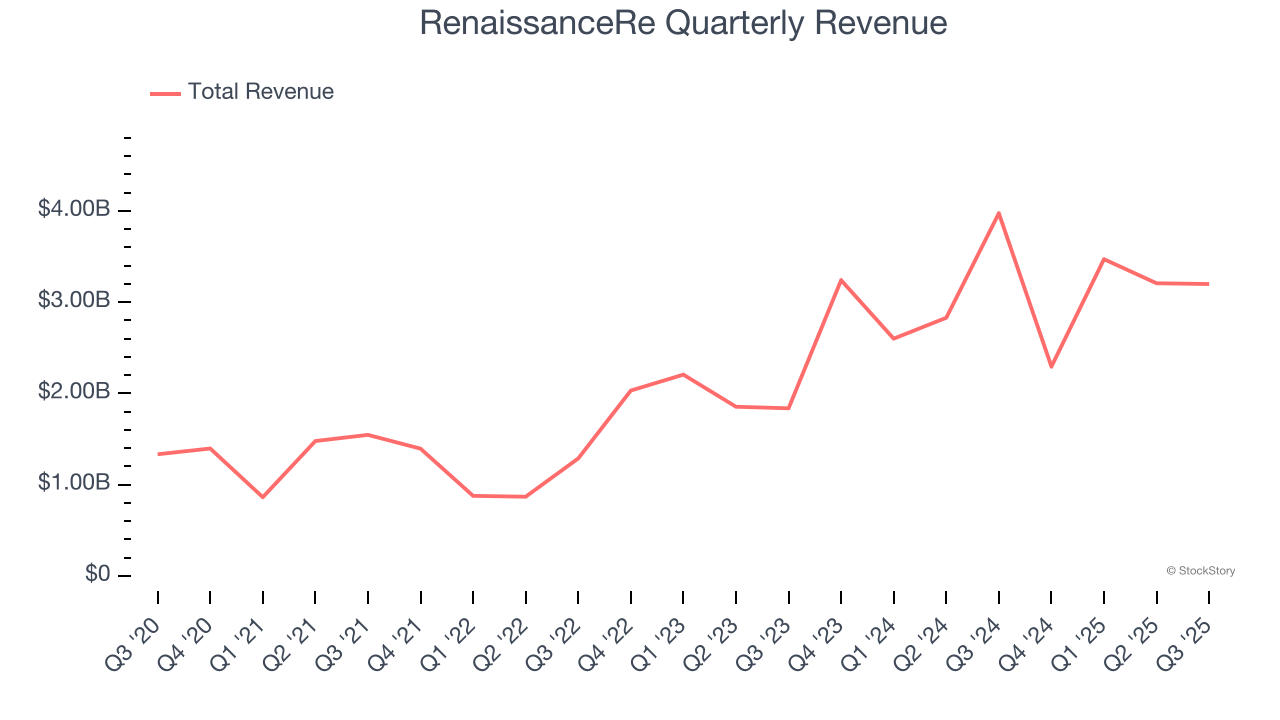
We at StockStory place the most emphasis on long-term growth, but within financials, a half-decade historical view may miss recent interest rate changes, market returns, and industry trends. RenaissanceRe’s annualized revenue growth of 23.9% over the last two years is above its five-year trend, suggesting its demand was strong and recently accelerated. 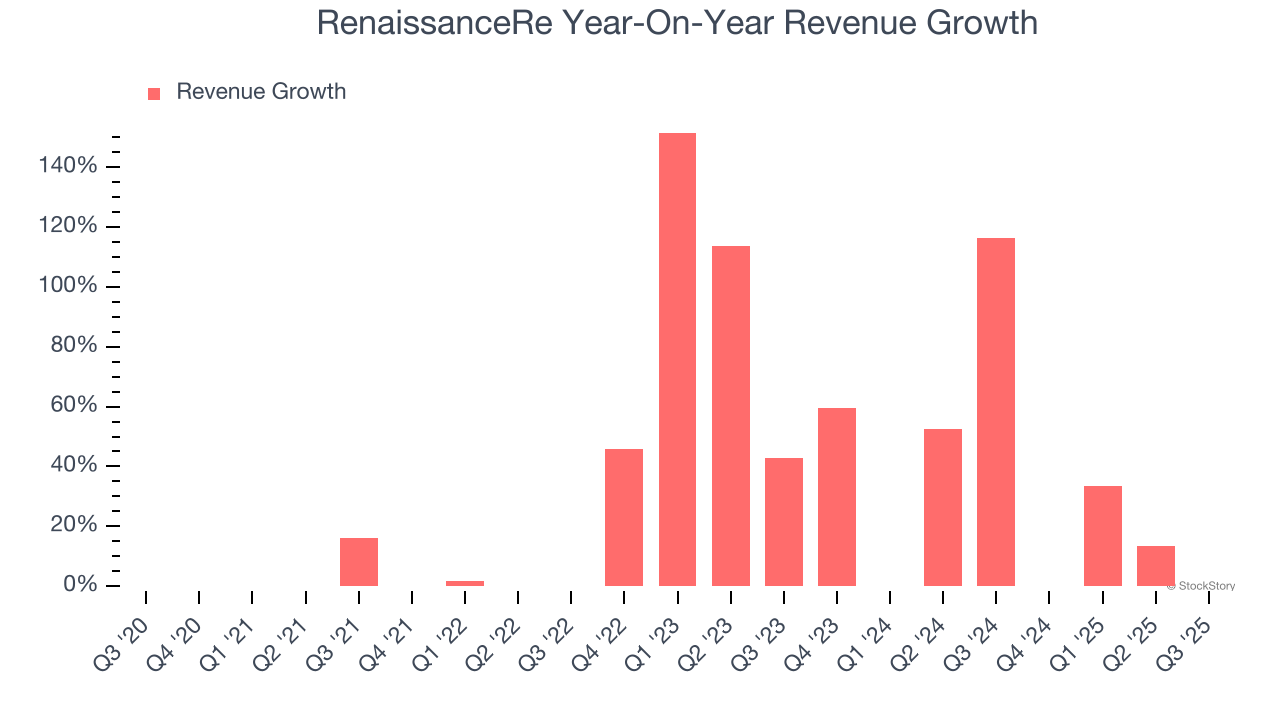 Note: Quarters not shown were determined to be outliers, impacted by outsized investment gains/losses that are not indicative of the recurring fundamentals of the business.
Note: Quarters not shown were determined to be outliers, impacted by outsized investment gains/losses that are not indicative of the recurring fundamentals of the business.
This quarter, RenaissanceRe’s revenue fell by 19.5% year on year to $3.2 billion but beat Wall Street’s estimates by 9.7%.
Net premiums earned made up 88.8% of the company’s total revenue during the last five years, meaning RenaissanceRe barely relies on non-insurance activities to drive its overall growth.
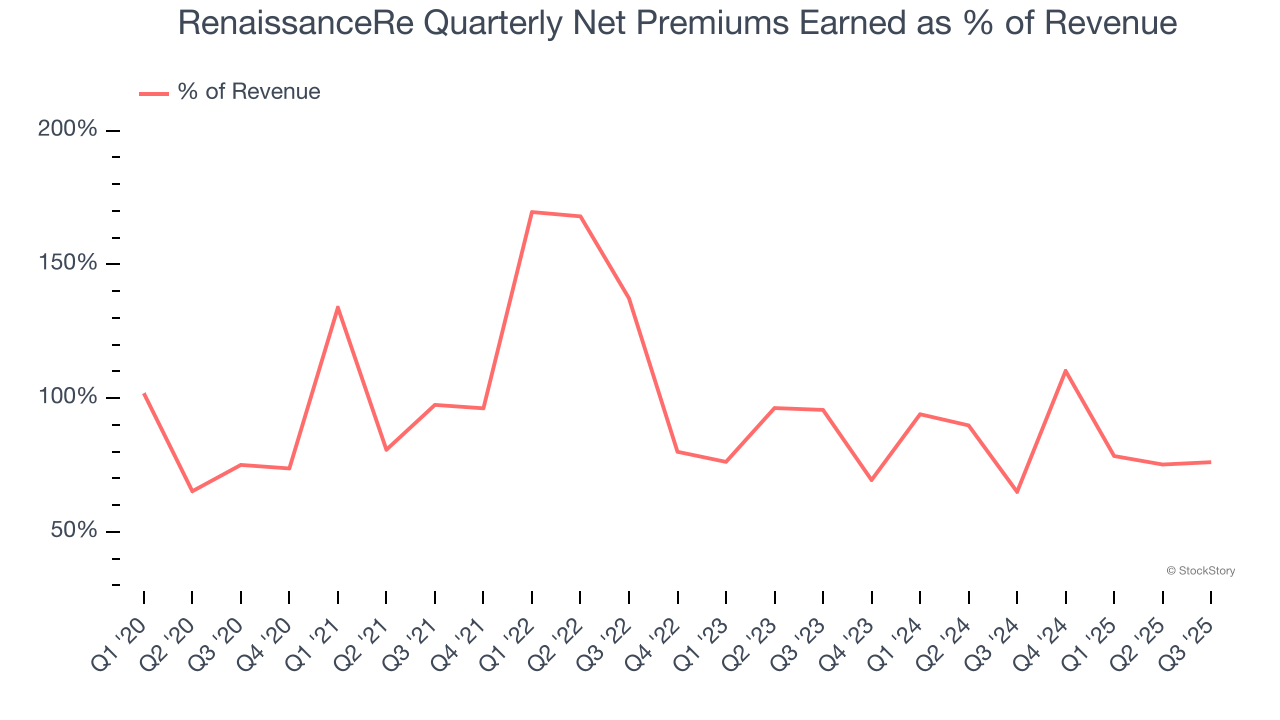
Net premiums earned commands greater market attention due to its reliability and consistency, whereas investment and fee income are often seen as more volatile revenue streams that fluctuate with market conditions.
Unless you’ve been living under a rock, it should be obvious by now that generative AI is going to have a huge impact on how large corporations do business. While Nvidia and AMD are trading close to all-time highs, we prefer a lesser-known (but still profitable) stock benefiting from the rise of AI. Click here to access our free report one of our favorites growth stories.
Book Value Per Share (BVPS)
Insurers are balance sheet businesses, collecting premiums upfront and paying out claims over time. Premiums collected but not yet paid out, often referred to as the float, are invested and create an asset base supported by a liability structure. Book value per share (BVPS) captures this dynamic by measuring these assets (investment portfolio, cash, reinsurance recoverables) less liabilities (claim reserves, debt, future policy benefits). BVPS is essentially the residual value for shareholders.
We therefore consider BVPS very important to track for insurers and a metric that sheds light on business quality because it reflects long-term capital growth and is harder to manipulate than more commonly-used metrics like EPS.
RenaissanceRe’s BVPS grew at an impressive 11.3% annual clip over the last five years. BVPS growth has also accelerated recently, growing by 31.5% annually over the last two years from $133.63 to $231.23 per share.
Key Takeaways from RenaissanceRe’s Q3 Results
It was good to see RenaissanceRe beat analysts’ EPS expectations this quarter. We were also excited its revenue outperformed Wall Street’s estimates by a wide margin. On the other hand, its net premiums earned slightly missed. Zooming out, we think this quarter featured some important positives. The stock traded up 3.2% to $239 immediately after reporting.
RenaissanceRe put up rock-solid earnings, but one quarter doesn’t necessarily make the stock a buy. Let’s see if this is a good investment. What happened in the latest quarter matters, but not as much as longer-term business quality and valuation, when deciding whether to invest in this stock. We cover that in our actionable full research report which you can read here, it’s free for active Edge members.





